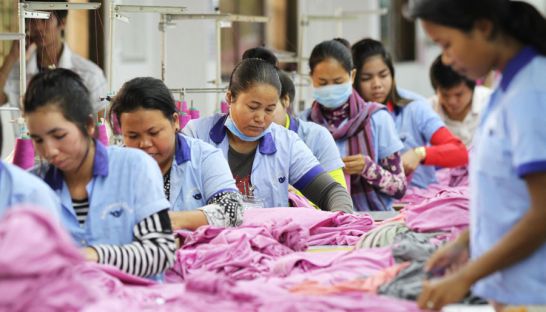Conditions declining: report
Conditions declining: report
Conditions relating to worker safety in Cambodia’s garment factories have worsened since 2011, according to the latest semi-annual assessment from the International Labour Organisation’s Better Factories Cambodia (BFC).

The report is composed of data taken from factory monitoring between November 1, 2012, and April 30. One hundred and fifty-two garment factories were assessed during this period, of which 51 per cent had been examined five or more times. For 26 per cent it was a first time visit, and the remaining 23 per cent had been visited between two and four times.
While BFC noted some improvements to entitlement payments from the previous reporting period, of concern to the factory monitors is ongoing noncompliance in areas of worker health and safety, fire safety, and child-labour laws.
“Significant numbers of factories are failing to comply with the law,” the report said, with reference to worker health and fire safety.
As for “the industry’s fainting problem”, 73 per cent of the 152 garment factories assessed in the period registered excessively high heat levels, 61 per cent didn’t provide enough cups for drinking water and 55 per cent did not provide proper equipment for handling chemicals.
“Unfortunately, our data shows that following steady improvement in working conditions from 2005 to 2011, conditions are now declining,” said Jill Tucker, chief technical adviser of ILO-Better Factories Cambodia, said, adding that those monitored previously had had plenty of opportunities to fix noncompliance issues.
Better Factories is funded by the government, the Garment Manufacturers Association in Cambodia (GMAC), the World Bank, the US Department of Labor and AusAid; it also makes money by selling its reports to brands.
GMAC secretary-general Ken Loo attributes most of the increased noncompliance figures to the BFC’s sampling of new factories — 26 per cent in the case of this report.
“When you have more new members, more new factories, I suppose that it is sad to assume that the first time they are being monitored or audited, more likely they will have more points of noncompliance,” he said. “It is not to say that new factories would have lower levels of compliance, but it is more likely, not because they are not aware of the concept of compliance, but that they don’t know what the specifics are in Cambodia,” he said.
Loo said that the purpose of the report is to highlight the need for factories to pay more attention to health and safety. With that, he said, “we concur”.
BFC asked that lessons be learned after the collapse in April of a garment factory that killed more than 1,100 in Bangladesh, and the death of two Cambodians after a mezzanine floor gave way at the Wing Star Shoes factory in Kampong Speu province about a month later.
Little, however, has improved from the previous six-month reporting period.
Fifty-three per cent of factories were found to be obstructing pathways, some 15 per cent of factories kept emergency exits locked during working hours, and 45 per cent of the factories had not conducted an emergency fire drill in the past six months, according to the report.
Welcoming the findings, the government said that officials work closely with BFC and also have their own inspectors regularly visiting factories to ensure compliance.
“We protect both employees and employers to balance both their benefits,” said Om Mean, secretary of state for the Ministry of Labour and Vocational Training.
Acknowledging BFC’s work to improve some aspects of the industry, the Coalition of Cambodian Apparel Workers Democratic Union president, Ath Thon, said the scope of BFC’s monitoring needs to be expanded to include more of the 412 exporting factories and the hundreds of subcontracting factories that are overlooked, to “reflect the reality of the whole industry”.
“We urge ILO’s BFC to release the report publicly about any factories that do not comply with the labour law or workers in order for them to improve,” Thon said, echoing recommendations made by California-based Stanford University’s “Monitoring in the Dark”, a report critiquing BFC’s program published in February.
GMAC’s Loo disagrees with the notion that specific factory compliance reports should be released, comparing such a move to asking someone to view your bank account.
The bleak assessment comes at a time “when global garment and footwear buyers are publicly stating that they seek factories and business partners that show workers more consideration,” said the BFC, cautioning against potentially detrimental impact to the industry if changes aren’t made.
On whether declining conditions highlighted in the report deter business, Anna Eriksson, a spokeswoman for garment wear buyer H&M, said the company wants “to continue our business in Cambodia. We are dependent on stable markets in which people are treated with respect and with our dedication we can contribute to positive development.”
Eriksson cited projects H&M had embarked on hoping to see “improved industrial relations and a strengthen dialogue between the different parties involved”.
phnompenh post













